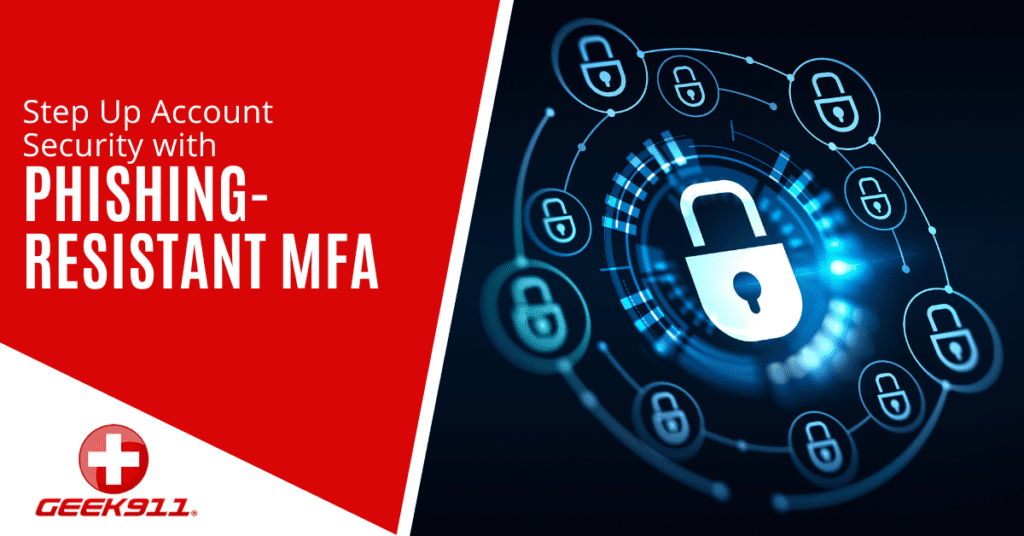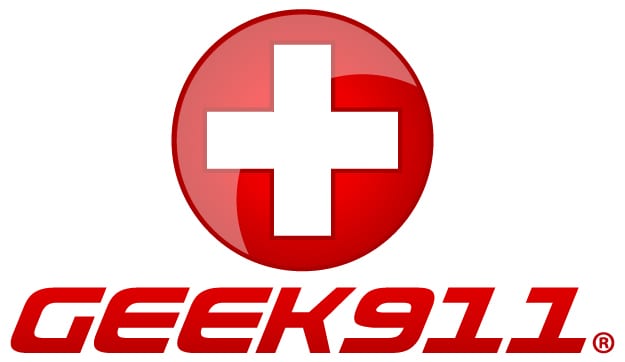Step Up Account Security with Phishing-Resistant MFA

Phishing is a major cybersecurity threat, and one of the most effective ways to protect against it is through the use of Multi-Factor Authentication (MFA). However, not all MFA methods are created equal. To truly protect against phishing attacks, you need to step up your account security with phishing-resistant MFA.
Phishing-resistant MFA is resistant to phishing attempts to disrupt or compromise an authentication process. These phishing attacks include spear phishing, reply attacks, credential stuffing, brute force attacks, and more. The most common way businesses experience one or more of these attacks is via email.
According to a report by Small Business Trends, 83% of businesses experienced successful phishing attacks in previous years via email.
Contrary to popular opinion, SMS and OTPs (One-Time Passwords), push notifications, and even security questions, are no longer regarded as phishing-resistant techniques because they’re all vulnerable to almost all forms of cyber-attacks.
Protect yourself from the ruthless tactics of phishers with phishing-resistant Multi-Factor Authentication (MFA). With advanced authentication methods, such as biometrics and behavioral analysis, this powerful security tool ensures that only you have access to your sensitive information and keeps the cybercriminals at bay.
What is Phishing-Resistant MFA?
This is one question many organizations ask! Phishing-resistant MFA is a method of verifying a user’s identity that uses multiple forms of authentication to protect against phishing attacks. It serves as an extra and stronger layer of security that is intended to make it more challenging for hackers and cyber-attackers to gain access to an individual’s or a company’s sensitive information.
One of the most common forms of MFA is two-factor authentication (2FA), which involves using something that the user knows (e.g. a password) and something that the user has (e.g. a phone or security token) to verify their identity. With phishing-resistant MFA, a third form of authentication is added, such as biometric data or a user behavioral pattern, to make it even more difficult for hackers to gain access.
What Are the Benefits of Phishing-Resistant MFA?
Although traditional MFA has several advantages, it is still vulnerable to phishing attacks. Here are the benefits of phishing-resistant MFA:
- Phishing-resistant MFA doesn’t use weak factors for authentication.
- It removes the dangers of using shared secrets and passwords
- Phishing-resistant use authentications like public and private cryptographic keys, solid user biometrics (facial or touch), and FIDO2 standards.
- It boosts security across devices and accounts.
- It gives organizations a way to comply with their security and legal needs.
- It ensures proper SSO (Single Sign-On) compliance and customer identity verification.
- Only the devices used to enroll to a website or an app are permitted to log in.
- It strengthens the connection between the browser session and active devices.
Aside from these benefits, phishing-resistant MFA offers a unique protection factor to your business.
How to Set Up Account Security with Phishing-Resistant MFA
Setting up account security with phishing-resistant MFA involves a few key steps:
- Identify the accounts that require MFA
The first step in setting up MFA is identifying which accounts and systems within your organization must be protected. These may include financial systems, email accounts, customer databases, and other sensitive information.
- Research different MFA methods
Once you’ve identified which accounts need to be protected, you’ll need to research the available types of MFA. Some popular methods include biometric authentication, SMS-based authentication, software tokens, public and private cryptographic keys, solid user biometrics (facial or touch), and FIDO2 standards. When researching different MFA methods, be sure to focus on those that are considered phishing-resistant, such as biometric and behavioral biometrics
- Implement MFA
Once you’ve chosen the appropriate MFA method(s) for your organization, you’ll need to implement them. This may involve installing new software, setting up new hardware, or providing training to employees.
- Test and evaluate
After implementing MFA, it’s important to test it to ensure it’s working correctly. This may involve simulating phishing attacks or monitoring user activity to identify potential vulnerabilities.
- Provide employee training
Be sure to provide training to employees on how to use phishing-resistant multi-factor authentication and how to spot and avoid phishing attacks. This can help to ensure that they understand the importance of MFA and know how to use it effectively.
- Continuous monitoring
Keep monitoring and updating your MFA solution as phishing techniques constantly evolve. Keep an eye on security alerts and vulnerabilities and take action accordingly.
Following these steps, you can set up account security with phishing-resistant MFA and better protect your organization from phishing attacks.
What Are the Components of Phishing-Resistant MFA?
Below are several components of the phishing-resistant MFA:
- It only responds to authorized parties
- It eliminates shared secrets
- Stable connection between user identity and authenticator
These components are what make phishing-resistant MFA stand out and strong cyber protection.
Why Does Your Business Need Phishing-Resistant MFA?
The prevalence of online fraud has grown along with phishing attempts and has had diverse adverse effects on businesses, such as data leakage, supply chain fraud, data theft, ransomware attacks, malware installation, etc. Each day, hackers intensify organizational attacks by sending malicious emails to clients and partners using the phished account. This ruins the business’s reputation and creates mistrust.
MFA has been shown to be vulnerable and ineffective against advanced phishing attacks. Hence, phishing-resistant MFA isn’t an option but a significant necessity for your business due to the upsurge in phishing attempts.
It is important to note that stepping up account security with phishing-resistant MFA is the most effective technique to protect you, your company, and your staff from phishing scams.
How Can You Set Up Account Security with Phishing-Resistant MFA? Let GEEK911 Help You!
GEEK911 acts as an extension to your business, assisting you to keep your IT resources productive by ensuring effective equipment upgrades and training your employees on the best productivity solutions available from cloud providers.
If you need assistance setting up your phishing-resistant MFA, you can reach GEEK911 via 1-866-433-5411 or send us a message.
